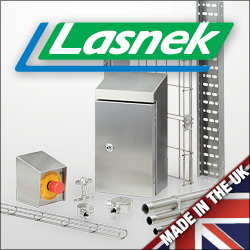
Posted to News on 7th Feb 2018, 10:41
3D printed grippers cost less and are quicker to manufacture
By switching from machined aluminium grippers to 3D printed versions made from igus iglidur i150 filament, a manufacturer of cosmetic products has reduced costs by up to 85 per cent and manufacturing time by 70 per cent.

Carecos Kosmetik GmbH, a contract manufacturer of cosmetic products, has its own packaging machines and, for each new product being packaged, teh company develops a specific gripper to pick up the lid and screw it onto the bottle. Previously an elaborate machining process was used to make the gripper from aluminium. Not only did that cost up to EUR10,000 per part, it also took six weeks to manufacture.
That is too long a wait in an industrial sector where, in the dawn of the Industry 4.0 era, it is increasingly important to be able to produce even small batches economically. For these reasons the company initially tried 3D printing the grippers using standard plastics such as ABS (acrylonitrile butadiene styrene) and PLA (polylactide). However, the 3D printing processes did not provide satisfactory results; this is because almost all of the individual parts of the gripper are exposed to constant wear.
Carecos Kosmetik turned to igus for help and advice. With the tribologically optimised iglidur i150 filament, the company found a stable yet very impact-resistant material for 3D printing. Moreover, each gripper can be printed within just 10 to 12 hours. This has enabled the company to save up to 85 per cent of the cost and 70 per cent of the manufacturing time compared with machined aluminium parts. Compared with standard materials such as PLA, iglidur tribofilaments are up to 50 times more wear-resistant and can be processed on all standard 3D printers. An additional benefit for the company is that the plastic grippers are seven times lighter than their metal counterparts.
For more information about 3D printed iglidur tribofilaments go to www.igus.co.uk/3dprint.


















